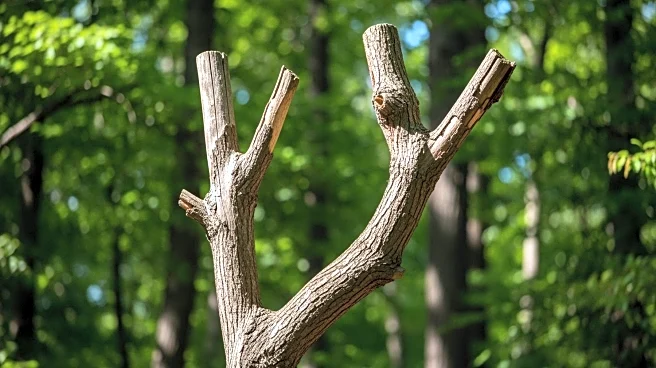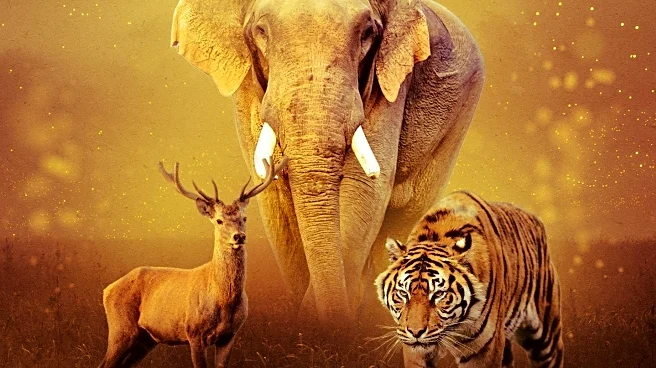What's Happening?
A recent study conducted at Kyoto City Zoo has provided insights into the mechanics of knuckle-walking in gorillas, suggesting that this form of locomotion evolved independently in African great apes.
The research involved three western lowland gorillas and utilized custom-made force plates to measure ground reaction forces as the gorillas walked across beams. The study found significant differences in the biomechanics of gorilla knuckle-walking compared to chimpanzees, indicating that these species developed this trait separately. The research highlights the unique adaptations of gorillas to their arboreal environments, which differ from the terrestrial locomotion observed in other primates.
Why It's Important?
The findings of this study are significant as they challenge previous assumptions about the evolutionary pathways of African great apes. Understanding the independent evolution of knuckle-walking in gorillas and chimpanzees can provide deeper insights into the adaptive strategies of these species in response to their environments. This research could influence future studies on primate evolution and biomechanics, potentially impacting conservation strategies by highlighting the unique ecological needs of these species. Additionally, the study underscores the importance of preserving diverse habitats that support the distinct evolutionary paths of different primate species.
What's Next?
Further research is likely to explore the implications of these findings on the broader understanding of primate evolution. Scientists may investigate other anatomical and behavioral traits that have evolved independently in gorillas and chimpanzees. This could lead to a reevaluation of the evolutionary relationships among African great apes and their adaptation strategies. Conservationists might also use this information to advocate for habitat protection, ensuring that the unique ecological niches of these species are preserved.
Beyond the Headlines
The study raises questions about the role of environmental pressures in shaping the evolution of locomotion in primates. It highlights the complex interplay between anatomy, behavior, and environment, suggesting that similar traits can arise independently in response to different ecological challenges. This research may prompt a reexamination of other evolutionary traits in primates and their adaptive significance.












